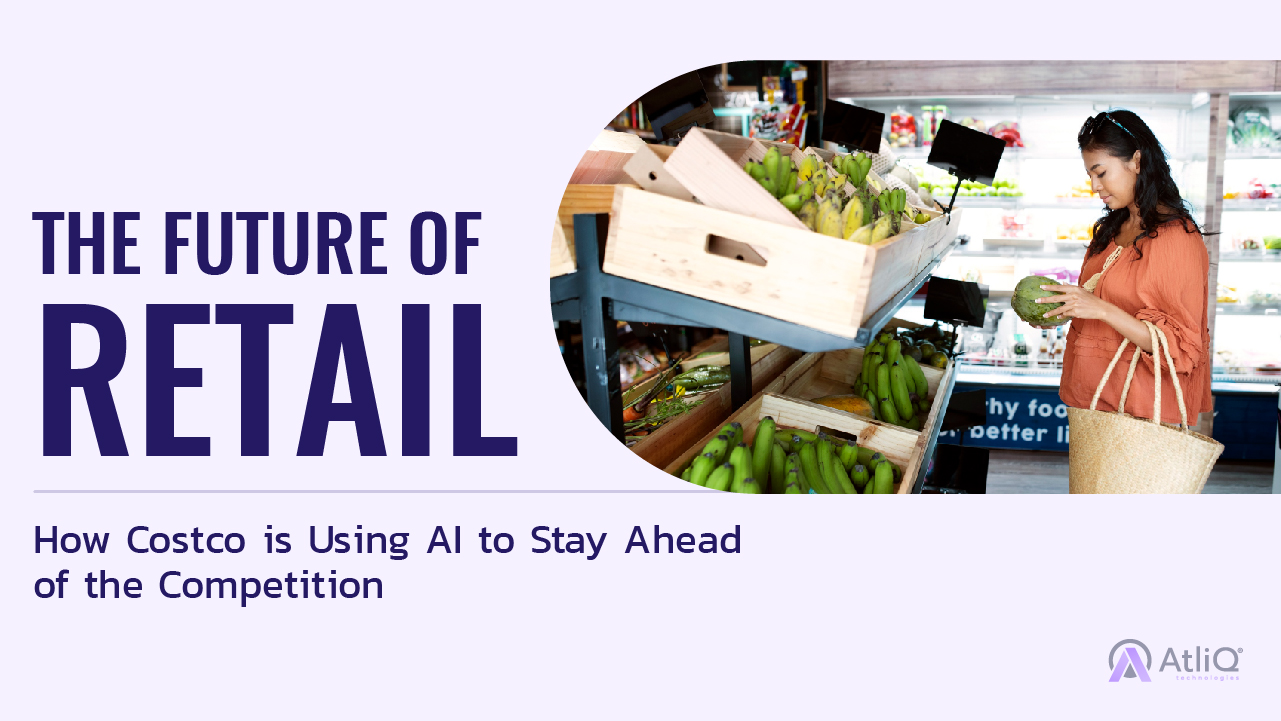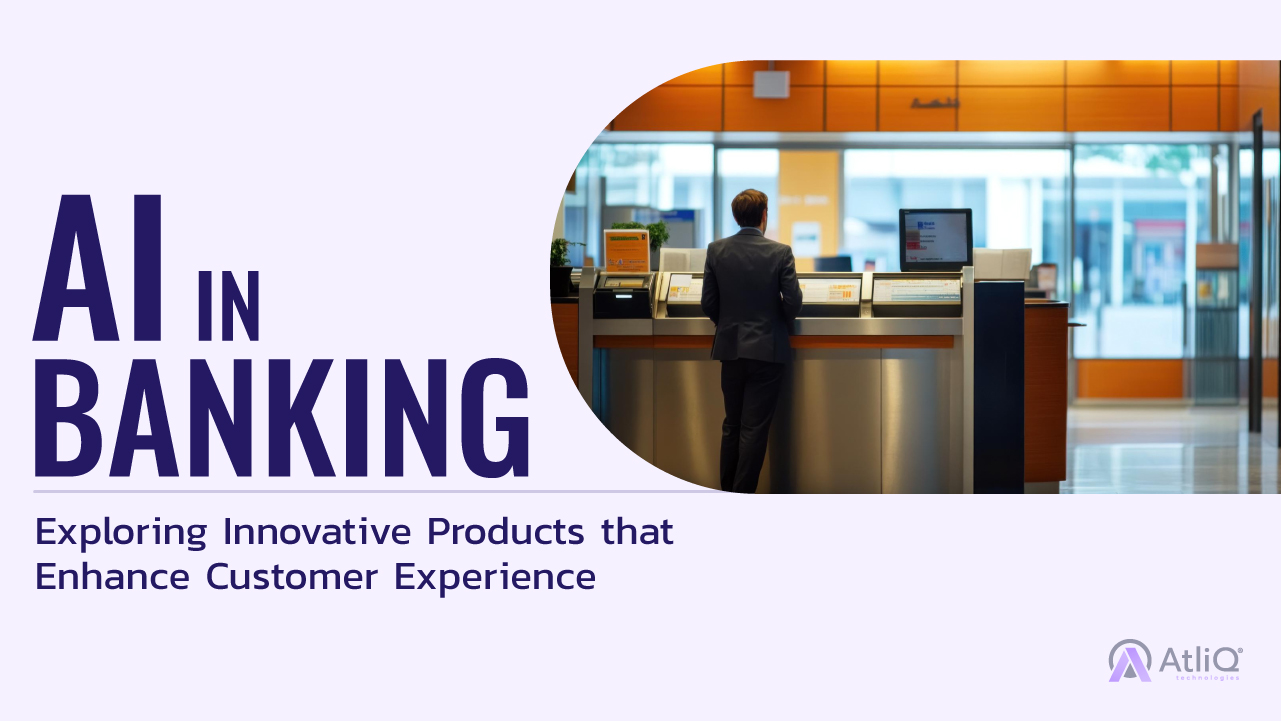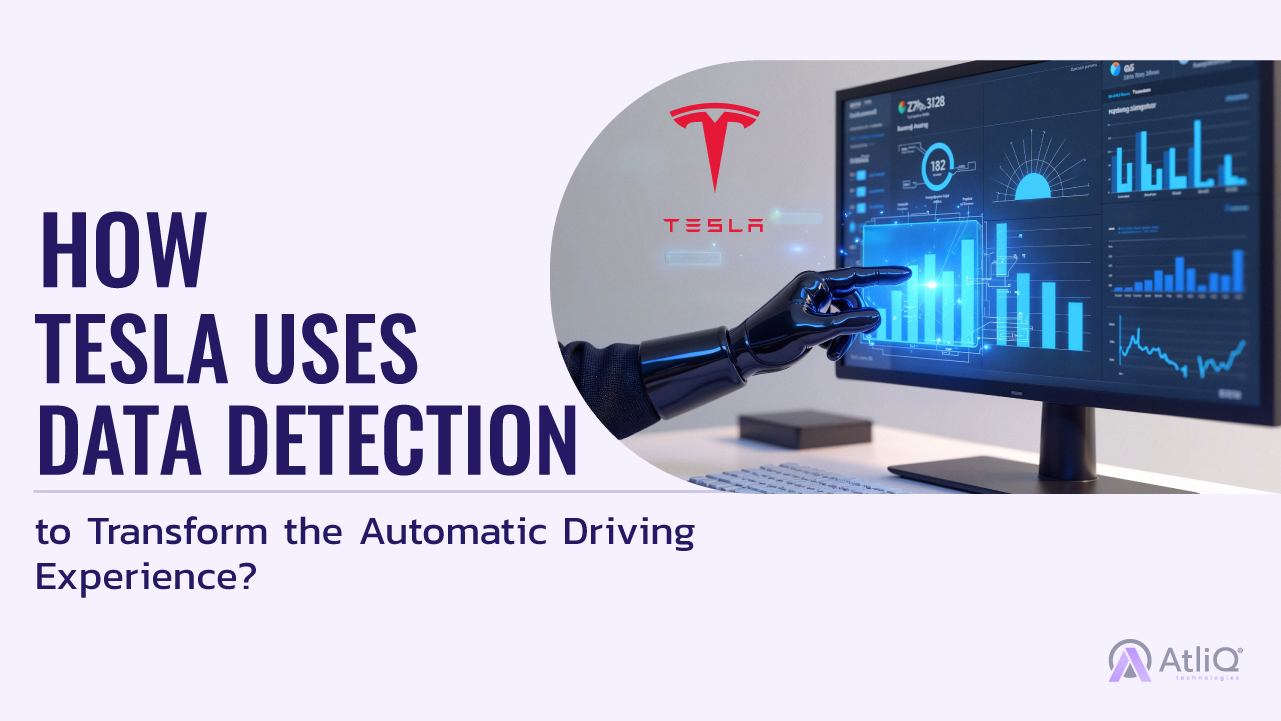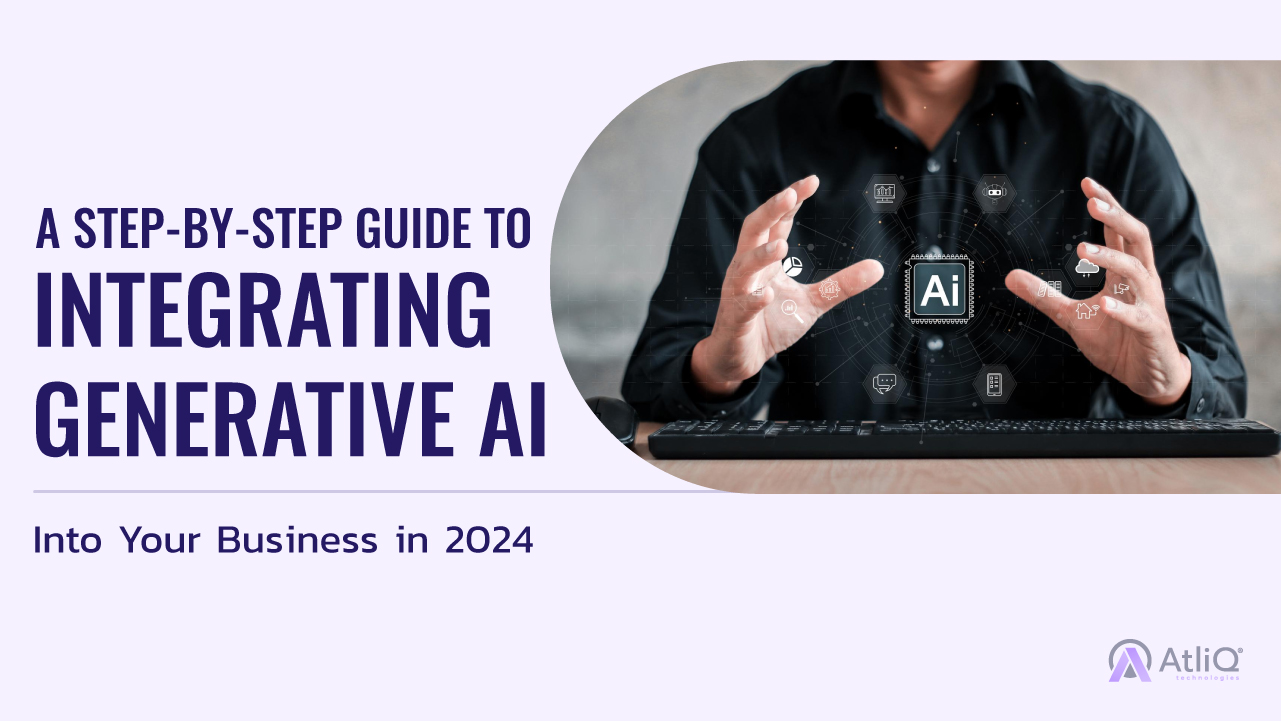
In today’s rapidly evolving business landscape, staying ahead of the curve is no longer just a goal—it’s a necessity. Imagine having a tool that can write compelling content, analyze vast amounts of data in seconds, and even provide personalized customer interactions, all while learning and improving over time. This isn’t a glimpse into the distant future; it’s the power of Generative AI (GenAI), and it’s now available to businesses.
Think of GenAI as a highly skilled team member who never sleeps, never tires, and is always ready to tackle complex tasks. But, like any new team member, integrating GenAI into your business requires careful planning and strategy. It’s not just about adopting new technology; it’s about transforming your operations and making your processes smarter, faster, and more efficient.
In this blog, we’ll walk you through the steps of integrating GenAI into your business. Whether you’re a small startup or a large enterprise, understanding how to harness the power of GenAI can revolutionize your work. So, let’s embark on this journey together, exploring the potential of GenAI and discovering how it can help your business thrive in an increasingly competitive world.
Definition of Generative AI
Generative AI refers to a subset of artificial intelligence that focuses on creating new content by learning from existing data. Unlike traditional AI, which typically performs tasks based on predefined rules, GenAI leverages deep learning algorithms to generate text, images, audio, and even video that closely mimic human creation. By analyzing patterns and structures in the input data, GenAI can produce highly realistic and contextually appropriate outputs, making it an incredibly powerful tool for various applications.
A Few Examples of GenAI Applications
- Content Creation: GenAI can generate articles, blog posts, marketing copy, and social media content, saving time and enhancing creativity.
- Data Analysis: By sifting through large datasets, GenAI can uncover trends, provide insights, and even make predictions, helping businesses make informed decisions.
- Customer Service: Virtual assistants powered by GenAI can handle customer inquiries, provide personalized responses, and improve customer satisfaction by offering instant, accurate support.
By understanding these fundamental aspects and practical applications, businesses can begin to see the transformative potential of Generative AI.
Identifying Business Needs and Opportunities
Assessing Current Business Processes and Identifying Areas for Improvement: Before integrating Generative AI into your business, it’s crucial to take a step back and evaluate your current operations. Conduct a thorough assessment of your workflows, pinpointing inefficiencies and bottlenecks. This will help you identify areas where automation and advanced analytics could make a significant impact. Are there repetitive tasks that drain time and resources? Are you struggling to analyze large volumes of data quickly and accurately? Identifying these pain points is the first step toward leveraging GenAI effectively.
Pinpointing Specific Business Needs Where GenAI Can Add Value: Once you’ve assessed your current processes, the next step is to match specific business needs with GenAI’s capabilities. For example, if content creation is a bottleneck, GenAI can generate high-quality marketing materials and reports at scale. If data analysis is a challenge, GenAI can provide deep insights and predictive analytics to drive strategic decisions. Customer service can also benefit from GenAI-powered chatbots that offer personalized and efficient support. By pinpointing these opportunities, you can create a targeted approach to integrating GenAI, ensuring it delivers maximum value and aligns with your business goals.
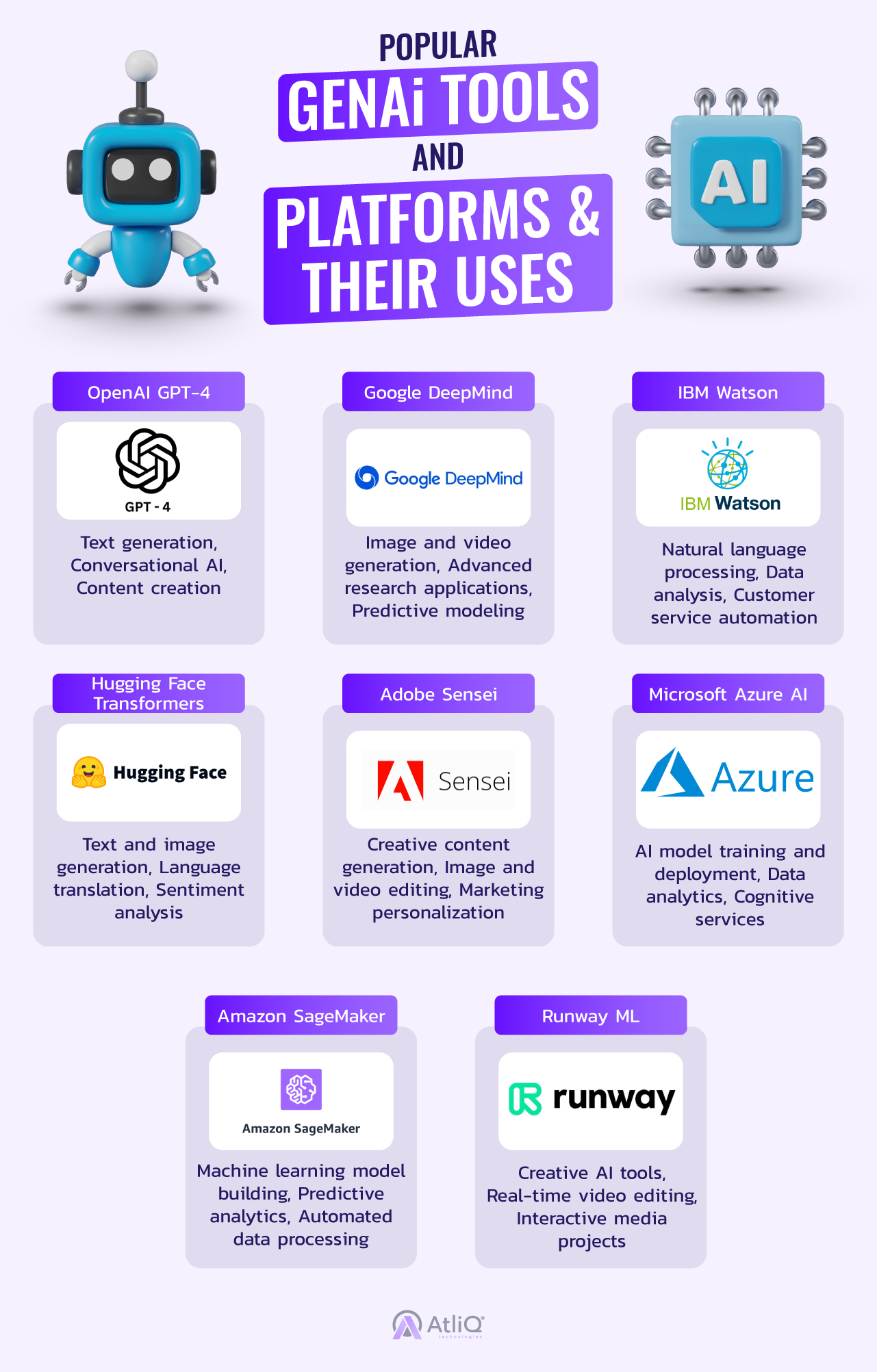
Developing a GenAI Integration Strategy
Integrating Generative AI (GenAI) into your business is a significant undertaking that requires a well-thought-out strategy to ensure success. This section outlines the key steps to develop a comprehensive integration strategy, including setting clear objectives, creating a detailed roadmap, and involving key stakeholders.
Steps to Develop a Comprehensive Integration Strategy
Assess Current Capabilities and Needs:
- Evaluate your current business processes to identify areas where GenAI can add value.
- Determine the technological and resource requirements needed to support GenAI integration.
- Conduct a gap analysis to understand the differences between your current state and desired outcomes with GenAI.
Research and Select the Right GenAI Tools:
- Explore various GenAI tools and platforms to find those that best align with your business needs.
- Consider factors such as scalability, ease of use, integration capabilities, and cost.
- Pilot selected tools on a small scale to evaluate their effectiveness before full-scale deployment.
Develop a Pilot Program:
- Start with a pilot program to test the integration on a smaller scale.
- Monitor the pilot program closely to identify any issues and gather feedback.
- Use insights from the pilot to refine your strategy and make necessary adjustments.
Setting Clear Objectives and Goals
Establishing clear objectives and goals is crucial for guiding your GenAI integration strategy. These should be specific, measurable, achievable, relevant, and time-bound (SMART). Here are some examples of objectives:
- Increase Efficiency: Reduce the time spent on repetitive tasks by 30% within the next six months.
- Enhance Customer Experience: Improve customer satisfaction scores by 20% over the next year through AI-driven support.
- Boost Content Production: Generate 50% more marketing content without increasing current staff levels within three months.
Involving Key Stakeholders and Securing Buy-In from Management
Successful GenAI integration requires the support and involvement of key stakeholders. Here’s how to secure their buy-in:
Identify Key Stakeholders
- Determine who will be affected by the GenAI integration, including employees, managers, and external partners.
- Understand their concerns, expectations, and potential resistance to change.
Communicate the Vision and Benefits
- Clearly articulate the vision for GenAI integration and how it aligns with the company’s goals.
- Highlight the benefits, such as increased efficiency, cost savings, and improved customer experience.
Engage and Educate Stakeholders
- Conduct workshops and training sessions to educate stakeholders about GenAI and its potential impact.
- Encourage open communication and address any questions or concerns they may have.
Demonstrate Early Wins
- Share success stories and early wins from the pilot program to build confidence and demonstrate the value of GenAI.
- Use these examples to foster a positive attitude towards the integration process.
Establish a Governance Structure
- Create a governance structure to oversee the GenAI integration, including a steering committee and project teams.
- Assign clear roles and responsibilities to ensure accountability and effective decision-making.
Step-by-Step Guide to Implementing GenAI in Your Business
Implementing Generative AI (GenAI) in your business can be a transformative journey. Follow this step-by-step guide to ensure a successful integration:
Step 1: Data Preparation and Management
- Collect and Clean Data: Gather relevant data from various sources and clean it to remove errors and inconsistencies.
- Organize and Label Data: Structure the data in a way that aligns with your GenAI objectives, ensuring it’s properly labeled for training the AI models.
Step 2: Model Training and Customization
- Select the Right Model: Choose a GenAI model that fits your business needs, whether it’s for text generation, image creation, or predictive analytics.
- Train the Model: Use your prepared data to train the GenAI model, allowing it to learn and adapt to your specific requirements.
- Fine-Tune and Customize: Adjust the model parameters to optimize performance and ensure it meets your business goals.
Step 3: Integration with Existing Systems
- Develop APIs and Interfaces: Create application programming interfaces (APIs) and user interfaces (UIs) to integrate the GenAI model with your existing systems.
- Test Integration: Conduct thorough testing to ensure seamless integration and compatibility with your current workflows and platforms.
- Deploy the Model: Roll out the GenAI model into your production environment, making it accessible for day-to-day operations.
Step 4: Monitoring and Optimization
- Set Performance Metrics: Establish key performance indicators (KPIs) to monitor the effectiveness of the GenAI model.
- Continuous Monitoring: Regularly track the model’s performance and gather feedback from users.
- Iterate and Improve: Based on performance data and user feedback, make continuous improvements to the model and integration process.
Step 5: Training and Support
- Train Employees: Provide comprehensive training for employees to ensure they understand how to use the GenAI tools effectively.
- Establish Support Systems: Set up a support system for ongoing assistance, including help desks, FAQs, and dedicated support teams.
By following these steps, you can successfully implement GenAI in your business, driving innovation and efficiency while maintaining smooth operations.
From preparing your data and selecting the right tools to training your employees and continuously optimizing your AI systems, each step in this journey is crucial. The successful integration of GenAI requires careful planning, collaboration with stakeholders, and a commitment to ongoing learning and adaptation.
Ready to take your business to the next level with GenAI? AtliQ Technologies is your trusted partner in this exciting journey. With our deep expertise in AI development, data analytics, and digital transformation, we provide end-to-end support tailored to your unique needs.
Let’s turn your vision into reality. Contact AtliQ Technologies today and discover how we can help you harness the power of Generative AI to revolutionize your business. Together, we can unlock new possibilities and drive unparalleled growth.
Reach out to us now and start your GenAI transformation journey!
